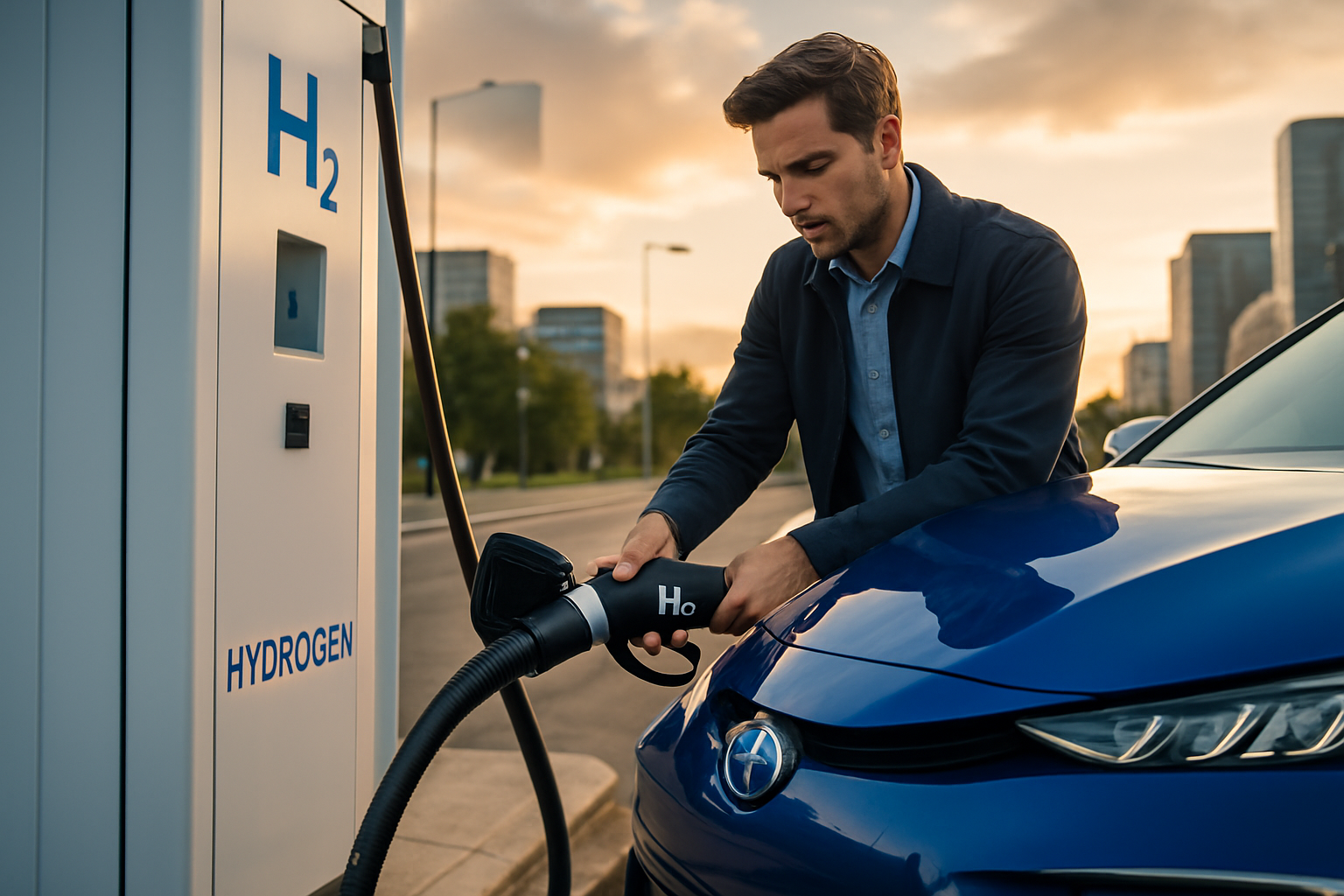Hydrogen Fuel Cell Vehicles: The Next Frontier in Clean Transportation
The automotive world is on the brink of a revolutionary shift, and hydrogen fuel cell vehicles (FCVs) are poised to play a significant role in this transformation. As we grapple with the urgent need to reduce carbon emissions and find sustainable alternatives to fossil fuels, FCVs offer a promising solution that combines zero-emission driving with the convenience of quick refueling. This article delves into the world of hydrogen-powered vehicles, exploring their technology, potential, and the challenges they face in becoming a mainstream transportation option.

The fuel cell stack consists of multiple individual cells, each containing an anode, cathode, and electrolyte membrane. Hydrogen is fed into the anode side, while oxygen (typically from the ambient air) enters the cathode. The electrolyte membrane allows only protons to pass through, creating an electric current that powers the vehicle’s motor.
Historical Context and Development
The concept of fuel cells dates back to 1838 when Welsh physicist William Grove first demonstrated the principle. However, it wasn’t until the 1960s that NASA began using fuel cells in space missions, providing both power and drinking water for astronauts. This early application paved the way for further research and development in the automotive sector.
In the 1990s, major automakers began seriously exploring fuel cell technology for vehicles. Companies like General Motors, Honda, and Toyota invested heavily in research and prototype development. The first commercially available fuel cell vehicle, the Honda FCX Clarity, hit the market in 2008, albeit in limited numbers and regions.
Current State of Hydrogen Fuel Cell Vehicles
Today, several automakers offer hydrogen fuel cell vehicles, with models like the Toyota Mirai, Hyundai Nexo, and Honda Clarity Fuel Cell leading the charge. These vehicles boast impressive ranges, often exceeding 300 miles on a single tank of hydrogen, and can be refueled in a matter of minutes, addressing the range anxiety and long charging times associated with battery electric vehicles.
The performance of FCVs has also improved significantly. Modern fuel cell stacks are more compact, efficient, and durable than their predecessors. Some models now offer acceleration and top speeds comparable to conventional gasoline-powered vehicles, dispelling the notion that eco-friendly cars must sacrifice performance.
Infrastructure Challenges and Solutions
One of the primary obstacles facing widespread adoption of hydrogen fuel cell vehicles is the lack of refueling infrastructure. Unlike electric vehicles, which can be charged at home or at increasingly common public charging stations, FCVs require specialized hydrogen filling stations. As of 2023, the number of these stations remains limited, with most concentrated in select regions like California, Japan, and parts of Europe.
However, efforts are underway to expand the hydrogen infrastructure. Governments and private companies are investing in the construction of new filling stations and the development of more efficient hydrogen production and distribution methods. For example, initiatives like the European Hydrogen Backbone aim to create a continent-wide network of hydrogen pipelines, which could significantly reduce distribution costs and increase availability.
Environmental Impact and Sustainability
While hydrogen fuel cell vehicles produce zero emissions at the point of use, the overall environmental impact depends on how the hydrogen is produced. Currently, most hydrogen is derived from natural gas through a process called steam methane reforming, which does generate carbon emissions. However, there’s a growing push towards green hydrogen production using renewable energy sources and electrolysis.
The potential for green hydrogen production opens up exciting possibilities for a truly sustainable transportation ecosystem. Excess renewable energy from solar or wind farms could be used to produce hydrogen, which can then be stored and used in fuel cell vehicles, creating a closed-loop, zero-emission cycle.
Economic Considerations and Market Potential
The economic viability of hydrogen fuel cell vehicles remains a topic of debate. Currently, FCVs are more expensive to produce than conventional vehicles or battery electric cars, primarily due to the cost of fuel cell stacks and the use of precious metals like platinum as catalysts. However, as production scales up and technology advances, these costs are expected to decrease.
From a consumer perspective, the operating costs of FCVs are currently higher than those of battery electric vehicles, mainly due to the higher price of hydrogen fuel. However, as infrastructure expands and production becomes more efficient, these costs are likely to become more competitive.
Future Outlook and Technological Advancements
The future of hydrogen fuel cell vehicles looks promising, with ongoing research focused on improving efficiency, reducing costs, and enhancing durability. Innovations in catalyst materials, such as the use of non-precious metals or reduced platinum loading, could significantly lower production costs. Additionally, advancements in hydrogen storage technology, including the development of solid-state storage solutions, could increase the range and safety of FCVs.
Beyond passenger vehicles, hydrogen fuel cells show great potential in other transportation sectors. Heavy-duty trucks, buses, and even trains and ships are being developed with fuel cell technology, leveraging the quick refueling times and long ranges that hydrogen offers.
In conclusion, hydrogen fuel cell vehicles represent a compelling option in the quest for sustainable transportation. While challenges remain, particularly in infrastructure development and cost reduction, the technology’s potential for zero-emission mobility with quick refueling times makes it an important player in the future of automotive innovation. As research continues and infrastructure expands, we may well see hydrogen-powered vehicles become a common sight on our roads, contributing to a cleaner, more sustainable future for transportation.





